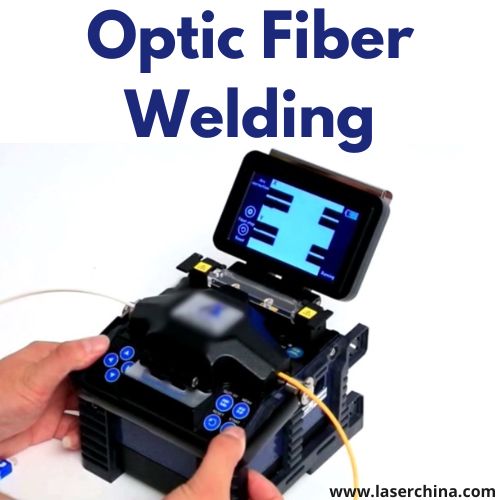In the digital age where milliseconds matter, few technologies operate as silently and precisely as optic fiber welding. Often overlooked, this process serves as the unsung hero behind the seamless transfer of massive volumes of data—connecting continents, powering global commerce, and driving the connected lifestyle we now consider routine.
What Is Optic Fiber Welding?
At its core, optic fiber welding—also known as fusion splicing—is the process of joining two optical fibers end-to-end using heat. When done correctly, it allows light signals to pass through with minimal loss or reflection. But calling it “just heating and sticking” is a dramatic understatement.
Optical fibers are made of ultra-pure glass with diameters thinner than a human hair. Aligning two such fibers down to the micron level and fusing them with pinpoint heat is an exercise in scientific accuracy. It’s a technique requiring advanced tools, steady hands, and an understanding of how even the slightest misalignment or impurity can destroy signal integrity.
Why the World Relies on Optic Fiber Welding
Every time you stream a video, send an email, or swipe right on a dating app, data travels across fiber-optic networks. From local area networks to undersea communication cables, the integrity of that data depends on solid, low-loss joints. This is where optic fiber welding becomes indispensable.
Industries like:
-
Telecommunication companies depend on spliced fibers for expanding and maintaining infrastructure.
-
Data centers require precise connections to ensure high-speed, high-capacity communication.
-
Military and aerospace applications rely on it for secure, interference-free signal paths.
-
Medical equipment manufacturers use it in high-end imaging systems and laser surgery devices.
The Process: A Ballet of Light and Precision
So how does optic fiber welding actually work?
Step 1: Preparation
The cable jackets are stripped to expose the bare glass fibers. These are then cleaned thoroughly to remove dust, oils, or coating debris. Precision matters. A single speck of dust can cause data errors or total signal loss.
Step 2: Cleaving
Each fiber is cleaved—cut with extreme accuracy—creating a flat, smooth surface. Unlike a typical “cut,” this involves scoring and snapping, much like breaking a glass rod. The quality of this cleave directly affects the success of the weld.
Step 3: Alignment
Here’s where technology shines. Using a fusion splicer, the two fiber ends are brought together. High-end machines use cameras and algorithms to align the fiber cores within fractions of a micron.
Step 4: Fusion
An electric arc is used to heat the fibers until they melt and fuse. This forms a single continuous glass path for light to travel. Unlike mechanical splices, fusion welding creates a joint so strong and lossless that it’s as if the fiber was never cut.
Step 5: Protection
After splicing, a protective sleeve is added over the weld and heat-shrunk in place. This shields the splice from environmental and mechanical damage, ensuring longevity.
Optical Performance: When Microns Matter
Fiber optics operate by transmitting light through glass. Even a slight imperfection in the splice can result in:
-
Insertion loss – reduced signal strength.
-
Return loss – light reflected back toward the source, degrading performance.
-
Backscatter – signal interference within the cable.
In the data world, this could mean slower downloads, degraded video quality, or failed server connections. When you’re transmitting 4K video or financial transactions, even microsecond delays or single-packet losses are unacceptable.
Equipment: The Unseen Arsenal
Behind every successful optic fiber weld lies advanced hardware engineered for microscopic accuracy.
-
Fusion splicers: These are intelligent machines that align and fuse fibers with automated precision. Modern units offer real-time core alignment, environmental compensation, and loss estimation.
-
Cleavers: These tools create the precision-cut surfaces that make welding possible.
-
Splice protectors and shrink ovens: Ensure the durability of the splice after the heat process.
Who Uses It—and Why It Matters More Than Ever
From 5G rollouts to global submarine cables, optic fiber welding is at the heart of today’s connectivity revolutions.
-
Telecom Providers: Companies expanding their fiber networks must rely on welding to connect thousands of endpoints. In dense urban infrastructure or remote rural projects, the reliability of these joints dictates service uptime.
-
Government & Defense: Secure, low-latency communication channels are fundamental to national security, battlefield coordination, and real-time surveillance. Optic fiber welding ensures those channels are robust and tamper-resistant.
-
Industrial Automation: Fiber optics are used to control machines in high-EMI (electromagnetic interference) environments. Welding allows custom lengths and durable connections to be created on-site.
-
Healthcare: Devices like endoscopes, imaging probes, and laser scalpel systems depend on perfectly spliced optical fibers to function correctly inside the human body.
Evolving Demands and Skill Development
As networks become more complex and data requirements increase, optic fiber welding must evolve too. Today’s technicians need to understand:
-
Fiber types: Single-mode, multi-mode, dispersion-shifted fibers all require different handling.
-
Environmental conditions: Humidity, dust, and temperature can impact splicing success.
-
Splicing for special use cases: Armored cables, ribbon fiber, or aerial deployments.
It’s no longer a task for generalists. Companies increasingly seek certified fusion splicing professionals—individuals who blend technical know-how with field experience. Training institutes, telecom companies, and even universities now offer hands-on certification programs dedicated to this specialized field.
Optic Fiber Welding in the Age of AI, IoT, and Big Data
As the world shifts toward smart cities, autonomous vehicles, and real-time cloud computing, demand for low-latency, high-capacity networks will explode. Fiber-optic infrastructure is the only solution scalable enough to support this. And at the core of it lies optic fiber welding.
Think about it: Self-driving cars cannot tolerate delay. Smart factories operate on millisecond timing. Remote surgery requires pixel-perfect precision. All these technologies are only as strong as the networks behind them—and those networks are only as strong as the quality of their fiber welds.
Final Thoughts
Optic fiber welding might sound like a niche technical operation. In reality, it’s the invisible force enabling everything from your smartphone’s notifications to Wall Street’s algorithmic trading. It’s a practice where light is shaped, guided, and trusted to carry the future.







